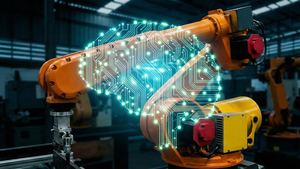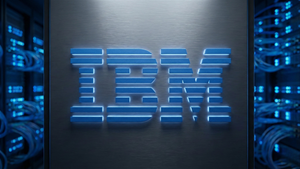
Brett Adcock, the visionary CEO of Figure AI (NASDAQ: FGR), is not one to mince words when describing the future of technology. He emphatically declares humanoid robotics as "the next major technological revolution," a paradigm shift he believes will be as profound as the advent of the internet itself. This bold assertion, coupled with Figure AI's rapid advancements and staggering valuations, is sending ripples across the tech industry, signaling an impending era where autonomous, human-like machines could fundamentally transform global economies and daily life. Adcock envisions an "age of abundance" driven by these versatile robots, making physical labor optional and reshaping the very fabric of society.
Figure AI's aggressive pursuit of general-purpose humanoid robots is not merely theoretical; it is backed by significant technological breakthroughs and substantial investment. The company's mission to "expand human capabilities through advanced AI" by deploying autonomous humanoids globally aims to tackle critical labor shortages, eliminate hazardous jobs, and ultimately enhance the quality of life for future generations. This ambition places Figure AI at the forefront of a burgeoning industry poised to redefine the human-machine interface in the physical world.
Unpacking Figure AI's Autonomous Marvels: A Technical Deep Dive
Figure AI's journey from concept to cutting-edge reality has been remarkably swift, marked by the rapid iteration of its humanoid prototypes. The company unveiled its first prototype, Figure 01, in 2022, quickly followed by Figure 02 in 2024, which showcased enhanced mobility and dexterity. The latest iteration, Figure 03, launched in October 2025, represents a significant leap forward, specifically designed for home environments with advanced vision-language-action (VLA) AI. This model incorporates features like soft goods for safer interaction, wireless charging, and improved audio systems for sophisticated voice reasoning, pushing the boundaries of what a domestic robot can achieve.
At the heart of Figure's robotic capabilities lies its proprietary "Helix" neural network. This advanced VLA model is central to enabling the robots to perform complex, autonomous tasks, even those involving deformable objects like laundry. Demonstrations have shown Figure's robots adeptly folding clothes, loading dishwashers, and executing uninterrupted logistics work for extended periods. Unlike many existing robotic solutions that rely on teleoperation or pre-programmed, narrow tasks, Figure AI's unwavering commitment is to full autonomy. Brett Adcock has explicitly stated that the company "will not teleoperate" its robots in the market, insisting that products will only launch at scale when they are fully autonomous, a stance that sets a high bar for the industry and underscores their focus on true general-purpose intelligence.
This approach significantly differentiates Figure AI from previous robotic endeavors. While industrial robots have long excelled at repetitive tasks in controlled environments, and earlier humanoid projects often struggled with real-world adaptability and general intelligence, Figure AI aims to create machines that can learn, adapt, and interact seamlessly within unstructured human environments. Initial reactions from the AI research community and industry experts have been a mix of excitement and cautious optimism. The substantial funding from tech giants like Microsoft (NASDAQ: MSFT), OpenAI, Nvidia (NASDAQ: NVDA), and Jeff Bezos underscores the belief in Figure AI's potential, even as experts acknowledge the immense challenges in scaling truly autonomous, general-purpose humanoids. The ability of Figure 03 to perform household chores autonomously is seen as a crucial step towards validating Adcock's vision of robots in every home within "single-digit years."
Reshaping the AI Landscape: Competitive Dynamics and Market Disruption
Figure AI's aggressive push into humanoid robotics is poised to profoundly impact the competitive landscape for AI companies, tech giants, and startups alike. Companies that stand to benefit most directly are those capable of integrating advanced AI with sophisticated hardware, a niche Figure AI has carved out for itself. Beyond Figure AI, established players like Boston Dynamics (a subsidiary of Hyundai Motor Group), Tesla (NASDAQ: TSLA) with its Optimus project, and emerging startups in the robotics space are all vying for leadership in what Adcock terms a "humanoid arms race." The sheer scale of investment in Figure AI, surpassing $1 billion and valuing the company at $39 billion, highlights the intense competition and the perceived market opportunity.
The competitive implications for major AI labs and tech companies are immense. Companies like Google (NASDAQ: GOOGL), Amazon (NASDAQ: AMZN), and Microsoft, already heavily invested in AI research, are now facing a new frontier where their software prowess must converge with physical embodiment. Those with strong AI development capabilities but lacking robust hardware expertise may seek partnerships or acquisitions to stay competitive. Conversely, hardware-focused companies without leading AI could find themselves at a disadvantage. Figure AI's strategic partnerships, such as the commercial deployment of Figure 02 robots at BMW's (FWB: BMW) South Carolina facility in 2024, demonstrate the immediate commercial viability and potential for disruption in manufacturing and logistics.
This development poses a significant disruption to existing products and services. Industries reliant on manual labor, from logistics and manufacturing to elder care and domestic services, could see radical transformations. The promise of humanoids making physical labor optional could lead to a dramatic reduction in the cost of goods and services, forcing companies across various sectors to re-evaluate their operational models. For startups, the challenge lies in finding defensible niches or developing unique AI models or hardware components that can integrate with or compete against the likes of Figure AI. Market positioning will hinge on the ability to demonstrate practical, safe, and scalable autonomous capabilities, with Figure AI's focus on fully autonomous, general-purpose robots setting a high bar.
The Wider Significance: Abundance, Ethics, and the Humanoid Era
The emergence of capable humanoid robots like those from Figure AI fits squarely into the broader AI landscape as a critical next step in the evolution of artificial intelligence from digital to embodied intelligence. While large language models (LLMs) and generative AI have dominated recent headlines, humanoid robotics represents the physical manifestation of AI's capabilities, bridging the gap between virtual intelligence and real-world interaction. This development is seen by many, including Adcock, as a direct path to an "age of abundance," where repetitive, dangerous, or undesirable jobs are handled by machines, freeing humans for more creative and fulfilling pursuits.
The potential impacts are vast and multifaceted. Economically, humanoids could drive unprecedented productivity gains, alleviate labor shortages in aging populations, and significantly lower production costs. Socially, they could redefine work, leisure, and even the structure of households. However, these profound changes also bring potential concerns. The most prominent is job displacement, a challenge that Adcock suggests could be mitigated by discussions around universal basic income. Ethical considerations surrounding the safety of human-robot interaction, data privacy, and the societal integration of intelligent machines become increasingly urgent as these robots move from factories to homes. The notion of "10 billion humanoids on Earth" within decades, as Adcock predicts, necessitates robust regulatory frameworks and societal dialogues.
Comparing this to previous AI milestones, the current trajectory of humanoid robotics feels akin to the early days of digital AI or the internet's nascent stages. Just as the internet fundamentally changed information access and communication, humanoid robots have the potential to fundamentally alter physical labor and interaction with the material world. The ability of Figure 03 to perform complex domestic tasks autonomously is a tangible step, reminiscent of early internet applications that hinted at the massive future potential. This is not just an incremental improvement; it's a foundational shift towards truly general-purpose physical AI.
The Horizon of Embodied Intelligence: Future Developments and Challenges
Looking ahead, the near-term and long-term developments in humanoid robotics are poised for rapid acceleration. In the near term, experts predict a continued focus on refining dexterity, improving navigation in unstructured environments, and enhancing human-robot collaboration. Figure AI's plan to ship 100,000 units within the next four years, alongside establishing a high-volume manufacturing facility, BotQ, with an initial capacity of 12,000 robots annually, indicates an imminent scale-up. The strategic collection of massive amounts of real-world data, including partnering with Brookfield to gather human movement footage from 100,000 homes, is critical for training more robust and adaptable AI models. Adcock expects robots to enter the commercial workforce "now and in the next like year or two," with the home market "definitely solvable" within this decade, aiming for Figure 03 in select homes by 2026.
Potential applications and use cases on the horizon are boundless. Beyond logistics and manufacturing, humanoids could serve as assistants in healthcare, companions for the elderly, educators, and even disaster relief responders. The vision of a "universal interface in the physical world" suggests a future where these robots can adapt to virtually any task currently performed by humans. However, significant challenges remain. Foremost among these is achieving true, robust general intelligence that can handle the unpredictability and nuances of the real world without constant human supervision. The "sim-to-real" gap, where AI trained in simulations struggles in physical environments, is a persistent hurdle. Safety, ethical integration, and public acceptance are also crucial challenges that need to be addressed through rigorous testing, transparent development, and public education.
Experts predict that the next major breakthroughs will come from advancements in AI's ability to reason, plan, and learn from limited data, coupled with more agile and durable hardware. The convergence of advanced sensors, powerful onboard computing, and sophisticated motor control will continue to drive progress. What to watch for next includes more sophisticated demonstrations of complex, multi-step tasks in varied environments, deeper integration of multimodal AI (vision, language, touch), and the deployment of humanoids in increasingly public and domestic settings.
A New Era Unveiled: The Humanoid Robotics Revolution Takes Hold
In summary, Brett Adcock's declaration of humanoid robotics as the "next major technological revolution" is more than just hyperbole; it is a vision rapidly being materialized by companies like Figure AI. Key takeaways include Figure AI's swift development of autonomous humanoids like Figure 03, powered by advanced VLA models like Helix, and its unwavering commitment to full autonomy over teleoperation. This development is poised to disrupt industries, create new economic opportunities, and profoundly reshape the relationship between humans and technology.
The significance of this development in AI history cannot be overstated. It represents a pivotal moment where AI transitions from primarily digital applications to widespread physical embodiment, promising an "age of abundance" by making physical labor optional. While challenges related to job displacement, ethical integration, and achieving robust general intelligence persist, the momentum behind humanoid robotics is undeniable. This is not merely an incremental step but a foundational shift towards a future where intelligent, human-like machines are integral to our daily lives.
In the coming weeks and months, observers should watch for further demonstrations of Figure AI's robots in increasingly complex and unstructured environments, announcements of new commercial partnerships, and the initial deployment of Figure 03 in select home environments. The competitive landscape will intensify, with other tech giants and startups accelerating their own humanoid initiatives. The dialogue around the societal implications of widespread humanoid adoption will also grow, making this a critical area of innovation and public discourse. The age of the android is not just coming; it is already here, and its implications are just beginning to unfold.
This content is intended for informational purposes only and represents analysis of current AI developments.
TokenRing AI delivers enterprise-grade solutions for multi-agent AI workflow orchestration, AI-powered development tools, and seamless remote collaboration platforms.
For more information, visit https://www.tokenring.ai/.





